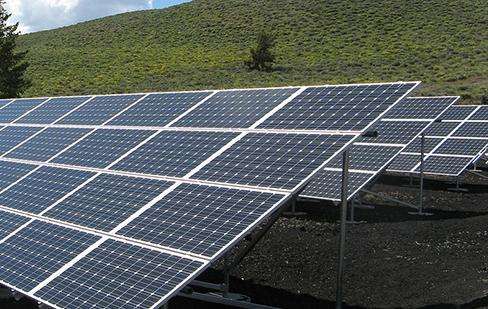1) Maintenance methods after laying the floor but before use
1 Clean the dust on the floor surface.
2. Remove the protective wax and other stains on the floor surface and use a water suction machine to absorb the sewage.
3. Rinse with clean water and dry.
4. Apply one to two coats of high-strength facial wax as needed.
(2) Daily cleaning and maintenance methods
1. Daily maintenance: Use a 90% dry mop to clean the floor; use a vacuum cleaner to vacuum. Dip a clean mop in a cleaning product diluted in a certain proportion for cleaning.
2. Monthly Maintenance: Plastic floors are typically waxed and maintained once a month.
Rubber flooring construction methods:
(1) Floor finishing
When constructing flooring materialsrubber, no matter how excellent the construction technology is, if you do not follow the decisions made accordingly according to the construction site conditions not only will not achieve good results, but will also lead to problems in the future.
Key points of construction technology: <1> Use a floor grinder with a power of more than 1000 watts to clean the floor, remove contamination, raised and loose areas and remove the surface hollow <; 2> Use Use an industrial vacuum cleaner with a power of at least 2000 watts to clean the floor. <3> Use interface treatment agent or rubber floor glue mixed with quartz sand to repair floor cracks.
(2) Self-leveling construction
1) Basic processing requirements:
The surface base before self-leveling cement must be smooth, dry, solid, free from dust and dirty, etc..
2) Steps and key points:
First use a special shovel to remove the original gypsum, paint, hard pieces of cement and other protrusions on the floor , and use high quality cement. mixed with special glue for leveling the floor. Potholes and cracks on the surface must be flat to meet the requirements of the ground; then use a grinder to polish the entire floor to ensure that there are no protrusions and loose surfaces on the floor; then let the flattened ground air dry naturally or use heating to dry it quickly. Ensure that the moisture content of the entire soil does not exceed 6%; then use a broom to clean the floor, and use a level measuring instrument to circle the floor; particularly high places on the floor with chalk, then use a grinder to clean these high places. Grind finely so that the difference in thickness ebetween the area and the ground next to it does not exceed 2 mm;
Finally. , use a large industrial vacuum cleaner to completely vacuum the construction floor several times to remove tiny particles on the floor.
3) Superior interface agent (primer)
The purpose of the primer is to separate the surface base coat from the self-leveling cement and has a certain degree of resistance to humidity. function. According to different production According to the manufacturer's requirements, water can be added to the base oil, and the proportion of water added can be based on the manufacturer's recommendations. After adding water, be sure to mix well, then use a lint-free roller to evenly apply the base oil to the surface according to the dosage provided by the manufacturer. For particularly dry floors, you can apply the base oil in two batches. . The amount used is the same as a single application. The interval is determined based one discoloration of the base oil.
4) Mixing
Sufficient preparation work should be done before mixing. It is best for a group of construction workers to prepare several buckets, three of which are used for mixing and one for mixing. Measure water, one is used to hold water. The bucket used to measure water must be accurate. Each manufacturer's self-leveling water ratio is different. Water ratio recommendations provided by the manufacturer should be strictly followed. The blender should be a high-powered blender with adjustable speed. You can put it on low speed first and mix for 2-3 minutes. The best choice for the mixing head is a self-leveling mixing head, as the mixing head is not. only has rotational force, but also shearing force, which can completely mix the self-leveling cement, and no cement blocks will be leftself-leveling on the barrel wall. After mixing 4-6 barrels, the mixing bucket and mixing head should be cleaned to prevent self-leveling from condensing on the barrel wall and mixing head over time.
Self-leveling constructions must be carried out continuously, and any cross construction is prohibited within 24 hours. After the mixing of the self-leveling cement is completed, the cement in the bucket should be poured into the construction site as soon as possible. If a self-leveling is to be made with a thickness of 2 mm, a self-leveling rake can be used. used to scrape it.
5) Fine grinding processing
Impeccable self-leveling construction is inseparable from the grinder. After the self-leveling construction is completed, there may still be small pores, particles and particles. there may be floating dust and there may be a height difference between the door andthe hallway. In these cases, a grinder is needed for finer leveling. The coarse grinding and fine grinding of the grinder are very helpful in saving material for the whole project. Coarse grinding can reduce the amount of self-leveler used, and fine grinding can reduce the amount of glue used in subsequent projects.
6) Adhesive Selection
Choose the correct and suitable adhesive/glue. Key Points: Select the most appropriate adhesive for the flooring material being used. Wrong selection can cause accidents due to poor adhesion between the flooring material and the floor. Additionally, it should be noted that different floor types and floor conditions or usage conditions require different adhesives to be chosen.














